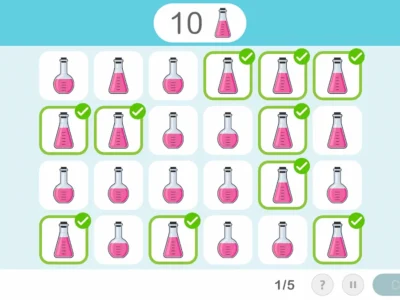Educator Irma Fernández outlines in this article the difficulties that people with Asperger face in their daily lives.
The term autism spectrum disorder has been the subject of debate because for those who interact with people who experience it and, moreover, have an analytical mind, it is important to have clarity in the concepts. Regardless of what it is called or how the person is referred to (autistic, with autism or with Asperger), it is essential to provide them with understanding, support, guidance and empathetic accompaniment throughout life, that is, from home, during primary, secondary and higher education until they enter the workforce (in the best of cases).
The condition of the autism spectrum until a few years ago included the category Asperger syndrome; however, it disappears in the most recent version of the DSM-5 Manual and ICD-11. It is currently cataloged as level 1 autism requiring support. What is relevant and real is that the condition exists and is present in society, that is, in the family, school, centers and in the workplace.
The person with Asperger in society
It is known that a significant number of people go through life without being diagnosed or are even misdiagnosed (with ADD or ADHD, language development disorder with primary deficiency in pragmatic language, social communication disorder or oppositional defiant disorder, among others). It is important to mention that in some cases there are comorbidities and that the person should be attended to in a comprehensive way. What these mistakes always point to are the behaviors that prevail when in a group. The peculiarity in their way of relating, communicating, thinking, using objects and reacting to certain stimuli is what draws attention.
Asperger and adaptation
Preschool teachers and peers are the ones who notice certain behaviors labeled as “weird” in classmates. The term “weird” refers to polar behaviors, that is, intense or inhibited. These are unbalanced behaviors that can appear at the start of the school year and that fade over time since the adaptive ability begins to strengthen in anyone, remaining “stuck or suspended” in some of them.
In primary education undiagnosed Asperger becomes apparent when the person who experiences it stays alone in the playground or chases their “friends” without following the implicit rules that everyone follows in those games.
The older they get, the greater the demand for adaptation. Those who live with Asperger can have a very hard time during high school and university, and even at work.
This raises some questions…

Subscribe
to our
Newsletter
How do people with Asperger behave?
Someone who lives with Asperger is generally solitary; it can be difficult for them to spontaneously initiate, sustain and conclude an interaction as would be expected. Without a filter they tell their teachers “leave me alone, I don’t want to, I don’t like you.” If classmates invite them to participate in a game, without a filter they ignore, reject and avoid them, and it is also likely that they talk all the time without realizing that they are being ignored, rejected and avoided because of their persistence on a topic of conversation, whether it is dinosaurs, car brands, dog breeds, flags of countries around the world or facts about World War II. Any child might be interested in knowing the breed of their pet, but only the first time their classmate mentions it.
Asperger during childhood
The behaviors of children who live with Asperger tend to be similar to each other. However, personality, character and style are vastly different due to the context in which they develop and their own abilities. Thus, a child may line up all kinds of materials within reach without allowing another to participate, becoming angry if someone dares to do so. Without a filter, they follow their impulse and take their classmates’ breakfast, leave the classroom without following the agreements to do so, come out of the bathroom with their underwear at their knees, repeat phrases they hear over and over, among many other situations that also attract attention because of their intensity and frequency.
In primary school, kids are rougher in their comments and in how they relate. Upon realizing that a classmate makes strange movements with their fingers, does not hold eye contact while speaking, does not understand jokes and interrupts others’ conversations and, above all, makes out-of-place comments all the time as if their mind worked without a filter, they label them as strange and little by little leave them out of the circle of friends. Sometimes they try to include them, but they do not know how. Listening to them talk about Godzilla all the time is absolutely boring and exhausting.
Asperger during adolescence
Adolescence is complicated for those going through this period and for everyone around them. For someone with Asperger it seems that this complication is intensified because the social aspect permeates the other areas that make up the individual’s integral development. Without a filter they choose the clothes to attend a gathering they may be forced to go to, obviously without caring about fashion trends or whether it is formal; what matters is feeling comfortable and sweatpants with a hoodie will be fine; their gustatory sensitivity will lead them to put an excessive amount of pasta on their plate without considering that there are other attendees, they will make unfortunate comments like how horrible the birthday person looks or they might want to be the one to blow out the candles on the cake.
Immaturity accompanies someone who lives with Asperger; there are girls who sleep with stuffed animals and boys who identify with and behave like anime characters. In high school they do not fit in with their peers precisely because of their tastes that they share without a filter even when not asked to. Young people use double entendres most of the time, leaving them at a disadvantage because they cannot decipher them, becoming objects of mockery and exclusion. Dating becomes complicated since the theory of mind is one of the great challenges for them because they find it difficult to interpret or “read” the partner’s nonverbal language. As is known, 70% of the communication we maintain with the interlocutor is bodily through gestures, mannerisms, including moments of silence.
Asperger in the workplace
The work environment heightens the demands for Relating with other Peoplee to interact with the world. It is common for young adults with Asperger to choose university degrees related to the hard sciences such as physics, mathematics, etc., in which they have minimal interaction with a group of people. Those who choose the soft sciences will require extra support that allows them to interpret reActions, intentions and Actions of the people they have to interact with.
There are other difficulties that are seldom taken into account. Attention is always drawn to the comments they blurt out without a filter about their coworkers or some clients. Some have to do with bad breath or the style of someone’s hair, with interrupting the story about their last vacation or with the resistance to pay attention to details of someone’s personal life. The difficulty accepting the Consequences of their Actions is a constant, so it is important to know in depth the Asperger syndrome so that anyone who has a relationship with someone with this condition has ways to explicitly point out what is expected of them in the different contexts in which they find themselves and the possible Consequences of each act they decide to carry out or not.
The need to use visual resources to regulate the behavior of people living with Asperger
Objects, photos, drawings and writing have a symbolic function, they are a reference and, therefore, give meaning. Thus, by resorting to photographs of socially accepted and non-accepted episodes and by showing and interpreting them, the behavior expected in that situation is made explicit. Age and level of abstraction of each person suggest what type of material to use. In this way executive functions begin to be strengthened, gradually reducing the reActions without a filter that are characteristic of people who live with Asperger.
Does this mean we should change the essence of the person who lives with Asperger?
In reality no. Any of us would like the people we relate to to be that sincere. And to tell us without a filter if they love us, if the clothes we’re wearing suit us, if our company is pleasant or uncomfortable, etc. What is intended is to soften others’ reactions to the situations described above and to mediate. To make them see that diversity is valuable and respect even more so. Empathy and solidarity are basic values that we will all have to practice constantly.
The role executive functions play
Executive functions allow us to adapt successfully to novel situations; using these resources is a good path, and in this way the “without a filter” traits that accompany a person living with Asperger day by day are gradually balanced.
Let us think about everyday life, where a 12-year-old boy is in class, his teacher is about to finish the lesson and begins to talk about the homework: analyze literary styles, find the story you prefer and write a new version according to the style we have just covered. His processing speed depends on some resource so that he is on par with the rest of the students. An agenda is useful, so they can anticipate Actions and successfully complete the task. In this case, it would consist of having a portable recorder at hand to activate when the time comes so that he can replay the instruction as many times as necessary. The unfiltered comment he usually expresses in such a situation is considerably reduced until it almost disappears. In this way each skill that makes up the executive functions can be addressed.
Conclusions
There are as many minds as there are people in the world, all respectable. The mind that acts without a filter, like that of people with Asperger, needs support to improve the quality of interaction. There are ways and resources; what may be lacking is knowledge and the will to do it. The small contribution to help my child, student, neighbor, colleague, teacher, partner, parent or boss enjoy social inclusion is voluntary. Although perhaps it may be I who have to admit that I speak, opine, judge and plan without a filter or live without a social filter.
Bibliography
- Diagnostic and Statistical Manual of Mental Disorders Fifth Edition (DSM V) American Psychiatric Association.
International Classification of Diseases for Mortality and Morbidity Statistics. Eleventh revision. CIE–11
Carnero-Pardo, C. Thematic press conference for Javier Tirapu Ustárroz: Executive functions [online]. Circunvalación del Hipocampo, May 2020 [Accessed: August 2, 2021]. Available at: https://www.hipocampo.org/Press Conferences/JavierTirapuUstarroz.asp
If you liked this article about the behavior of people with Asperger throughout their lives and the needs they have, you may also be interested in the following articles:
“This article has been translated. Link to the original article in Spanish:”
Las personas que viven con Asperger desde el punto de vista social







 Differential diagnosis of dementia etiologies based on AI using multimodal data
Differential diagnosis of dementia etiologies based on AI using multimodal data
Leave a Reply